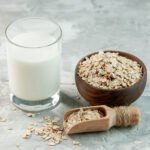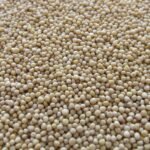An in-depth exploration into the nutritious world of Edamame, where we unpack its origins, the various ways it can be consumed, and its multitude of health benefits.
The Soybean that Took the World by Storm
Edamame, a name you’ve likely seen popping up on your local grocery store shelves or as a delicious appetizer in Asian restaurants. But, hey, what is this emerald delicacy exactly, and why is it all the rage?
Well, let’s get crackin’ and unshell the mystery of edamame.
What is Edamame and Where Does It Come From?
Edamame, pronounced as “eh-dah-MAH-meh”, isn’t some exotic, hard-to-find ingredient. It’s simply the name for immature soybeans, picked before they have had a chance to harden. The term “edamame” itself comes from Japanese, where “eda” means “branch”, and “mame” means “bean”.

Originating from East Asia, these plump green pods have been a staple in the Asian diet for over 2000 years! Yep, that’s right. In recent times, however, edamame has gained popularity worldwide due to its phenomenal nutritional profile and versatility in the kitchen.
Edamame: A Versatile Delight
Edamame can be enjoyed in a multitude of ways. You can boil ’em, steam ’em, stir-fry ’em, or even pop ’em right into your mouth fresh off the branch. They’re commonly served as a snack, tossed in a pinch of salt, or used as an ingredient in soups, salads, and even smoothies. Yum!
Not just that, edamame can also be processed into various forms such as edamame spaghetti, edamame noodles, and edamame hummus. Pretty versatile, eh?
The Green Gold: Edamame’s Nutritional Values
Edamame is chock-full of nutrients. Just a half-cup serving of shelled edamame provides an impressive range of vitamins, minerals, fiber, and protein. Let’s break it down:
| Nutrient | Value (per half-cup serving) |
|---|---|
| Calories | 120 |
| Protein | 11g |
| Fiber | 9g |
| Fat | 5g |
| Carbohydrates | 13g |
| Calcium | 60mg |
| Iron | 2.4mg |
| Magnesium | 60mg |
| Potassium | 485mg |
| Vitamin C | 6mg |
Why is Edamame Good for You?
These green gems aren’t just tasty, they pack a nutritional punch. Rich in protein, they’re a great choice for vegetarians and vegans who need to up their protein intake.
What’s more, the fiber content in edamame can aid digestion and keep your gut health on point. They’re also loaded with essential minerals like iron, magnesium, and calcium, which support various bodily functions. Now that’s what we call a superfood!
FAQs about Edamame
Is Edamame Good for Weight Loss?
Absolutely! Edamame is low in fat and high in fiber and protein. This combo keeps you feeling full for longer, helping to curb overeating and thus aiding in weight management.
Can I Eat Edamame Every Day?
Indeed you can! It’s a healthy addition to your diet when consumed in moderation. However, it’s worth noting that like other soy products, edamame contains isoflavones, which may affect hormone levels if consumed in large quantities.
How Do I Cook Edamame?
It’s simple! Boil the pods in salted water for about 5 minutes, drain and lightly sprinkle with salt. You can also steam them or toss them in a hot pan for a nice char. Either way, they’re scrumptious!
Wrap-up: Edamame, the Soy Sensation
With an impressive nutritional profile, versatility in cooking, and an appealing taste, it’s clear why edamame has become a favorite in the health food scene. It’s a gift from nature that’s hard to beat.
So, the next time you’re at the grocery store, give those green pods a whirl. You might just find your new favorite snack!
Fun Facts:
- Edamame has been grown in China for over 7000 years.
- Edamame is a complete protein – it contains all nine essential amino acids.
- In Japan, edamame is often served with beer as a snack.
Source: Healthline: Edamame Benefits




